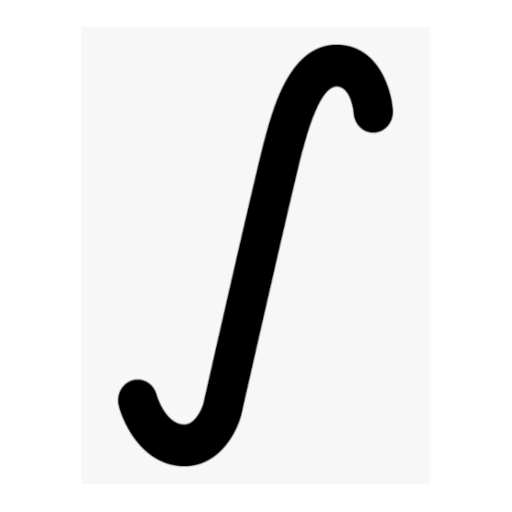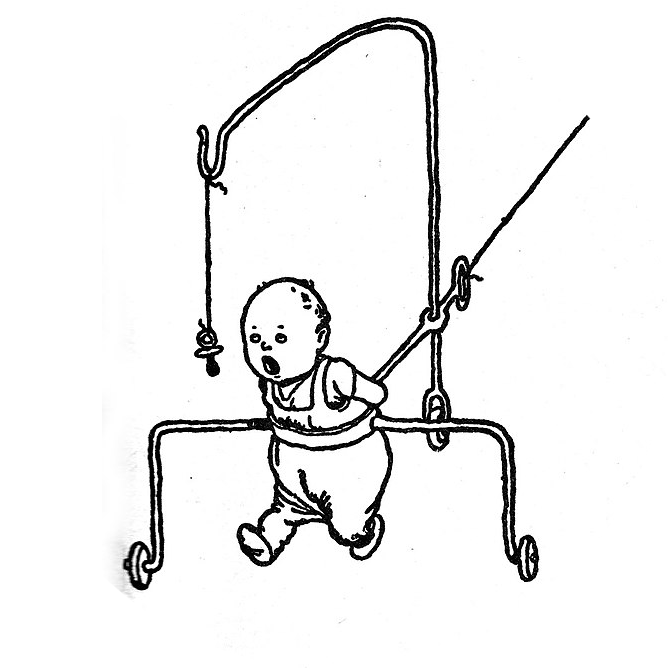zkfcfbzr
- 34 Posts
- 593 Comments

 17·21 days ago
17·21 days agoHere is an imgur album of all the images from the OP, for easier viewing - if you like one I recommend then downloading it from OP’s link since I’m pretty sure imgur recompresses uploads
Yes but it’s not hooked up to cable or the internet. I just use it for the Switch, or I’ll occasionally hook it up as an alternate second monitor to my PC and play a movie on it. It hasn’t been turned on in a few weeks and the last time was to be used as a temporary monitor to set up a new headless PC.
Adding on to the reasons others posted: Put yourself in his shoes for a moment. If you take off a year for him, that puts an immense amount of pressure on him. Pressure to go to the same school as you, pressure to go to school at all, even pressure to stay in the relationship.
It’s always gonna be “They made this gigantic life decision to their detriment for me, so if I change my mind about anything and want to do things differently, like by going to a different school, or not going to a school, or wanting to break up, then I’m a huge ungrateful jerk.”
Putting that kind of pressure on someone isn’t really cool, especially if they’re actively discouraging you from doing so.

 11·1 month ago
11·1 month agoGiven the specific names on that list, I took it as an awkward attempt to list the people they think are standing up, rather than a list of people they were admonishing for not standing up

 83·1 month ago
83·1 month agoOthers have covered that there were internal supports, so they were supporting nothing at all. But let’s assume they weren’t.
I’m going for an intentional underestimate - so let’s say there are 10 people in your layer (I think 8 is more likely), then 24 above them, 18 above them, 18 above them, 25 above them, 14 above them, and 2 above them. I think most people would agree those are underestimates for each ring.
That’s 101 people being supported by 10 people. If we take another underestimate that each of those people weighs 100 pounds (45.36 kg) then that’s 10,100 pounds (4581.28 kg) - or 1010 pounds (458.13 kg) supported by each of the 10 people in your ring, completely ignoring the weight of the metal rings visible in the picture. So I think it’s safe to say it was mostly the internal supports at work.

 96·1 month ago
96·1 month agoHere’s a better article that isn’t as uncritically sensationalist.
https://arstechnica.com/science/2025/04/de-extinction-company-announces-that-the-dire-wolf-is-back/
tl;dr is that it’s basically just a gray wolf with 14 edited genes, most of which are from natural gray wolf populations rather than dire wolf genomes. The result is a gray wolf that’s visually similar to a dire wolf, not a dire wolf.
Honestly the worst thing about this equation isn’t the fact that they had poor typesetting, it was that they used decorative constants. The ε and φ values they chose just cancel out. The equation is equivalent to (xᵢ - mᵢ) / mᵢ.
Asterisks for multiplication are fine and normal and common in typed text. Where it’s unusual is in text that’s been typeset, where using things like asterisks for multiplication defeat the point of typesetting, It would be like going through all the effort to typeset an equation, but still saying sqrt(x) instead of using the square root symbol.

 1·1 month ago
1·1 month agodisregard this comment

 1·1 month ago
1·1 month agoDo you follow the reasoning for why they set it up this way? The comments in this function from _xorg in keyboard make it seem like it expects
K1 K2 K3 K4.#: Finds a keycode and index by looking at already used keycodes def reuse(): for _, (keycode, _, _) in self._borrows.items(): keycodes = mapping[kc2i(keycode)] # Only the first four items are addressable by X for index in range(4): if not keycodes[index]: return keycode, indexI assume that second comment is the reason the person who wrote your function likes the number 4.
Which way is right/wrong here? It would seem at least part of the issue to me is that they don’t make the list be
K1 K2 K1 K2as they say, since the function I quoted above often receives a list formatted likeK1 K2 K1 NoSymbol.Also, if I modify the function you quoted from to remove the duplications, I’m still finding that the first element is always duplicated to the third element anyways - it must be happening elsewhere as well. Actually, even if I modify the entire function to just be something nonsensical and predictable like this:
def keysym_normalize(keysym): # Remove trailing NoSymbol stripped = list(reversed(list( itertools.dropwhile( lambda n: n == Xlib.XK.NoSymbol, reversed(keysym))))) if not stripped: return else: return (keysym_group(stripped[0], stripped[0]), keysym_group(stripped[0], stripped[0]))then the behavior of the output doesn’t change at all from how it behaves when this function is how it normally is… It still messes up every third special character, duplicating the previously encountered special character
Later edit: After further investigation, the duplication of the first entry to the third entry seems to happen in the Xlib library, installed with pynput, in the display.py file, in the change_keyboard_mapping function, which only has a single line. Inspecting the output of the get_keyboard_mapping() function both before and after the change_keyboard_mapping function does its thing shows that it jumps right from [0, 0, 0, 0, 0, 0, 0, 0, 0, 0] to [keysym, 0, keysym, 0, 0, 0, 0, 0, 0, 0]. It’s still unclear to me if this is truly intended or a bug.

 2·1 month ago
2·1 month agoGonna make some notes since I made some progress tonight (so far).
Within pynput’s keyboard’s _xorg.py file, in the Controller class, self._keyboard_mapping maps from each key’s unique keysym value, which is an integer, to a 2-tuple of integers. The actual keysym for each key in the mapping appears to be correct, but occasionally the 2-tuple duplicates that of another entry in self._keyboard_mapping - and these duplicates correspond precisely to the errors I see in pynput’s outputs.
For example, ‘𝕥’ has keysym = 16897381 and ‘𝕖’ has keysym = 16897366, but both 16897381 and 16897366 map, in self._keyboard_mapping, to the 2-tuple (8, 1) - and ‘𝕖’ is indeed printed as ‘𝕥’ by pynput. (𝕥’s keysym appears first in self._keyboard_mapping). (The 2-tuple keysyms map to are not unique or consistent, they vary based on the order they were encountered and reset when X resets)
Through testing, I found that this type of error happens precisely every third time a new keysym is added to self._keyboard_mapping, and that every third such mapping always duplicates the 2-tuple of the previous successful mapping.
From that register function I mentioned, the correct 2-tuple should be, I believe, (keycode, index). This is not happening correctly every 3rd registration, but I’m not yet sure why.
However, I did find a bit more than that: register() gets its keycode and index from one of the three functions above it, reuse() borrow() or overwrite(). The problematic keys always get their keycode and index from reuse - and reuse finds the first unused index 0-3 for a given keycode, then returns that. What I found here is that, for the array
keycodes, the first element is always duplicated to the third position as well, so indexes 0 and 2 are identical. As an example, here are two values ofkeycodesfrom my testing:keycodes = array('I', [16897386, 0, 16897386, 0, 0, 0, 0, 0, 0, 0]) keycodes = array('I', [16897384, 16897385, 16897384, 0, 0, 0, 0, 0, 0, 0])With this in mind, I was actually able to fix the bug by changing the line
for index in range(4):in reuse() tofor index in range(2):. With that change my script no longer produces any incorrect characters.However, based on the comments in the function, I believe range(4) is the intended behavior and I’m just avoiding the problem instead of fixing it. I have a rather shallow understanding of what these functions or values are trying to accomplish. I don’t know why the first element of the array is duplicated to the third element. There’s also a different issue I noticed where even when this function returns an index of 3, that index of 3 is never used in self._keyboard_mapping - it uses 1 instead. I’m thinking these may be two separate bugs. Either way, these two behaviors combined explain why it’s every third time a new keysym is added to self._keyboard_mapping that the issue happens: While they in theory support an index of 0 1 2 or 3 for each keycode, in practice only indices 0 1 and 3 work since 2 always copies 0 - and whenever 3 is picked it’s improperly saved as 1 somewhere.
I may keep investigating the issues in search of a true fix instead of a cover-my-eyes fix.

 1·1 month ago
1·1 month agoI agree and appreciate it. I’ve been trying to figure it out myself but feel a bit out of my element.
What I’ve found is that in pynput’s keyboard’s _xorg.py file, the Controller class’s self._keyboard_mapping seems to map some different keycodes to the same value, and that seems to correlate exactly with the errors I’m seeing. I haven’t figured out why yet. I got to thinking it had something to do with the register function in the _resolve_borrowing function but I forget why and I’m too tired to continue for now. I’ll continue tomorrow though.

 2·1 month ago
2·1 month agoHey! Sorry for the very late reply. I’ve been checking the thread regularly and I swear just a few hours ago (when I made the cross-posts) it was still at 0 replies. I’m gonna blame federation issues.
The command you provided does indicate I’m on pynput 1.8.1, so I can confirm v1.8.1 has the issue.

 40·1 month ago
40·1 month agoI absolutely hate this title. The first 70% gets you so excited.

 1·1 month ago
1·1 month agoI’m a little out of the loop on how reddit’s been. Is blocking links to X officially no longer allowed there?

 22·1 month ago
22·1 month agoIs there confirmation that he actually specifically wanted that image off reddit? Or is this just someone making assumptions after the recent story about him interfering with moderation at reddit?
Does this count as attempted murder?
My random username generator











It is 33% if the answer itself is randomly chosen from 25%, 50%, and 60%. Then you have:
If the answer is 25%: A 1/2 chance of guessing right
If the answer is 50%: A 1/4 chance of guessing right
If the answer is 60%: A 1/4 chance of guessing right
And 1/3*1/2 + 1/3*1/4 + 1/3*1/4 = 1/3, or 33.333…% chance
If the answer is randomly chosen from A, B, C, and D (With A or D being picked meaning D or A are also good, so 25% has a 50% chance of being the answer) then your probability of being right changes to 37.5%.
This would hold up if the question were less purposely obtuse, like asking “What would be the probability of answering the following question correctly if guessing from A, B, C and D randomly, if its answer were also chosen from A, B, C and D at random?”, with the choices being something like “A: A or D, B: B, C: C, D: A or D”